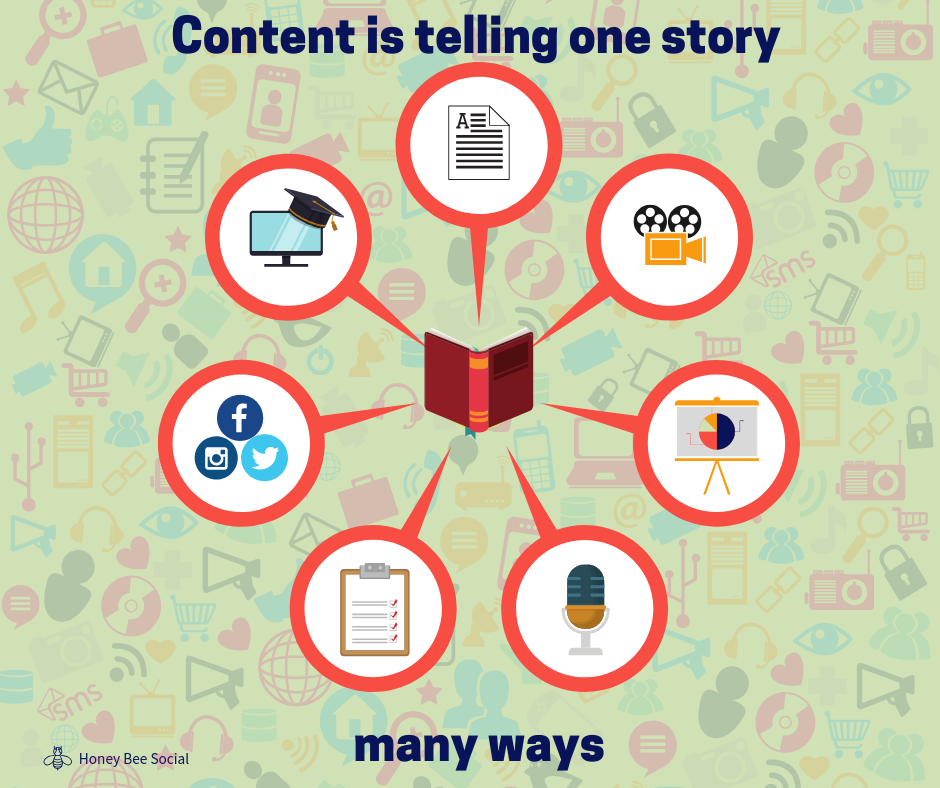What is Content?
So now that you know what the difference between marketing and advertising is (and if you don’t, best you read this blog post to find out), next question might be what is content. Content is a term that’s been hanging around for years, but no one really has a definition for it. Hopefully by the end of this blog post, you’ll understand what content is and why it’s an integral part of any marketing strategy.
Content is print or online material that informs and educates the reader while indirectly promoting a product or service. There’s heaps of articles out there that go on massive diatribes about what content is, but that essentially the gist of it.
Types of content
So with that definition in mind, that pretty much means anything is content right? Well, yes and no. Blog article? Yup that’s content. So are infographics, podcasts, video, checklists, social posts, webinars, e-books, white papers, capability documents, TED talks, and so on and so forth.
But what about Facebook ads? Or catalogues? You can easily end up in a grey area with these sorts of items. One easy way to determine if something is content or not, is if it has the word “ad” applied to it, then it’s not content. An ad is merely the conduit to amplify your piece of content. Ads don’t indirectly promote a product or service. They make it pretty obvious what they’re promoting, or at least they should (click bait anyone?).
The beauty about content is the infinite number of options you have to express your story. So how do you kill it in the content marketing game? Pretty simple - always remember, tell one story many different ways. People consume information in different ways. Not everyone is going to want to read a blog post. Some people might learn more easily by watching a video, or need an answer on the fly so an infographic is easier for them.
Think about it. If you write a blog post, you can’t really post that blog in its entirety on Facebook and get the same reach and traction now can you? But, if you write the blog, and create a snazzy infographic plus a short 60 second video, you can use these two other content forms of the same story to attract readers and potential customers to your website. Give that infographic the right file name and description and you’re letting Google and Bing know exactly what the infographic is about. Give the video the right description and tags and you’re doing the exact same thing on YouTube. And where does your video’s description tell viewers to go for more information? You guessed it, your website.
This doesn’t mean you should be creating content in every single medium. You create it whichever way you can and can easily manage. That also doesn’t mean create a piece of content just to get that click. Google is smart enough to know when someone has created a click bait-esque piece of content, and will down grade such pieces. So remember, think quality over quantity.
So that’s content in a nutshell. Got questions about content or stuck on how to share your story in different ways? Drop us a line. We’re more than happy to see how we can help. Or, sign up to our newsletter.

